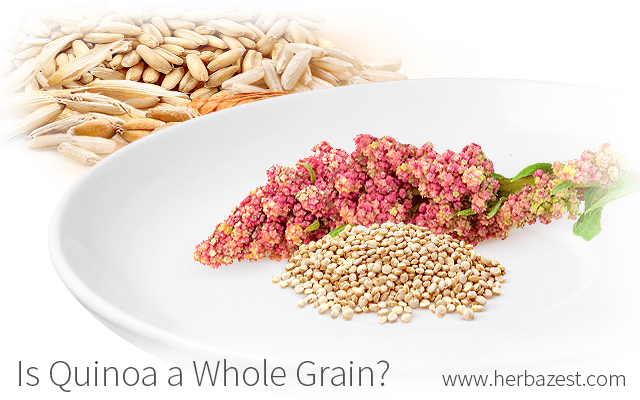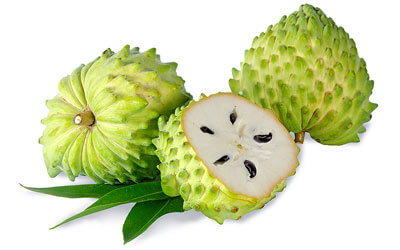Quinoa is a cool weather, annual plant that is primarily known for its exceptional nutritional value and versatility as an alternative to grains such as wheat. But is quinoa a grain itself? Though it has comparable nutritional value to whole grains, quinoa is not a true grain, but rather a pseudo-grain or psuedo-cereal that shares many properties with whole grains.
Differences between Quinoa and Whole Grains
There is no globally accepted definition of a whole grain; however, grains are the product of grassy plants that belong to the Poaceae family. These include wheat, barley, and oats, among others.
A whole grain is an intact, non-processed grain that contains all three parts:
Bran: the outer shell of the grain that is rich in fiber, vitamins, minerals, and phytonutrients.
Endosperm: the dense interior of the grain is rich in carbohydrates and protein.
Germ: the embryo of the grain is full of essential fatty acids, vitamin E, B vitamins, minerals, and phytonutrients.
AS PART OF THE CHENOPODIACEAE FAMILY, QUINOA IS A SEED THAT HAS ACTUALLY BEEN CLASSIFIED AS A PSEUDO-GRAIN OR PSEUDO-CEREAL.
But the differences between quinoa and whole grains are not just botanical. Most whole grains are thought to be native to Europe (oats), Western Asia (wheat), and East Asia (rice) and are believed to have been first cultivated 7,000 - 9,000 year ago. Quinoa's origins, on the other hand, have been traced back over 7,000 years to the Andean regions of South America, specifically around the Lake Titicaca.1
Most grains require very little attention and thrive on natural rainfall everywhere except for very arid regions. Their adaptability has allowed them to spread around the world, becoming a staple food for most cultures.
In comparison to whole grains, quinoa was domesticated and spread throughout the Andean region with the growth of the Incan Empire. Although the genetic diversity of its strains allows quinoa to be cultivated in different environments, its five major ecotypes are grown mainly in its indigenous territory.
Advantages of Quinoa Compared to Whole Grains
While there are many health benefits associated with eating whole grains, and though whole grains contain more essential nutrients than refined and enriched grains, they alone are not a good source of vitamin B9 (folate) - a nutrient that naturally occurs in quinoa.
184 GRAMS (1 CUP) OF COOKED QUINOA CONTAIN APPROXIMATELY 78 MICROGRAMS OF FOLIC ACID (20% DV).2
Furthermore, compared to most whole grains, quinoa has the advantage of not containing gluten, which is a protein found in grains. Some people experience bad reactions to gluten for different reasons, including wheat allergy, gluten intolerance, and celiac disease, which is characterized by the inability to digest gluten. As an alternative to many gluten-rich whole grains, quinoa has become a popular addition to the diet of people who cannot or do not want to consume gluten.
While quinoa and whole grains share many properties, quinoa offers a great nutritional profile that includes good levels of complete protein and folate as well as a lack of gluten, which makes of this pseudo-grain a great dietary alternative to many whole grains.
Sources
- Celiac Disease Foundation, What is Celiac Disease?
- Harvard University, School of Public Health, The Nutrition Source, Whole Grains
- Homegrown Whole Grains: Grow, Harvest, and Cook Wheat, Barley, Oats, Rice, Corn & More, p. 22
- Iowa State University, Origin, History, and Uses of Oat (Avena sativa) and Wheat (Triticum aestivum)
- Journal of Experimental Botany, Wheat, 2009
- Journal of Nutrition and Food Sciences, Quinoa (Chenopodium quinoa Willd), from Nutritional Value to Potential Health Benefits: An Integrative Review, 2016
- Oregon State University, Micronutrient Information Center, Whole Grains
- Purdue University, Alternative Field Crops Manual, Quinoa
- University of Mississippi Medical Center, Whole grains: Hearty options for a healthy diet
- FAOSTAT, State of the Art Report on Quinoa Around the World in 2013, Chapter 2.4: Quinoa Drought Responses and Adaptation
- University of Maryland Medical Center, Vitamin B9 (Folic acid)
- Mayo Clinic, Nutrition and healthy eating, Are there whole-grain options that are gluten-free?
Footnotes:
- Frontiers in Plant Science. (2016). The Global Expansion of Quinoa: Trends and Limits. Retrieved October 9, 2021 from https://www.ncbi.nlm.nih.gov/pmc/articles/PMC4860459/
- Department of Agriculture. (2019). Quinoa, cooked. Retrieved October 9, 2021 from https://fdc.nal.usda.gov/fdc-app.html#/food-details/168917/nutrients




